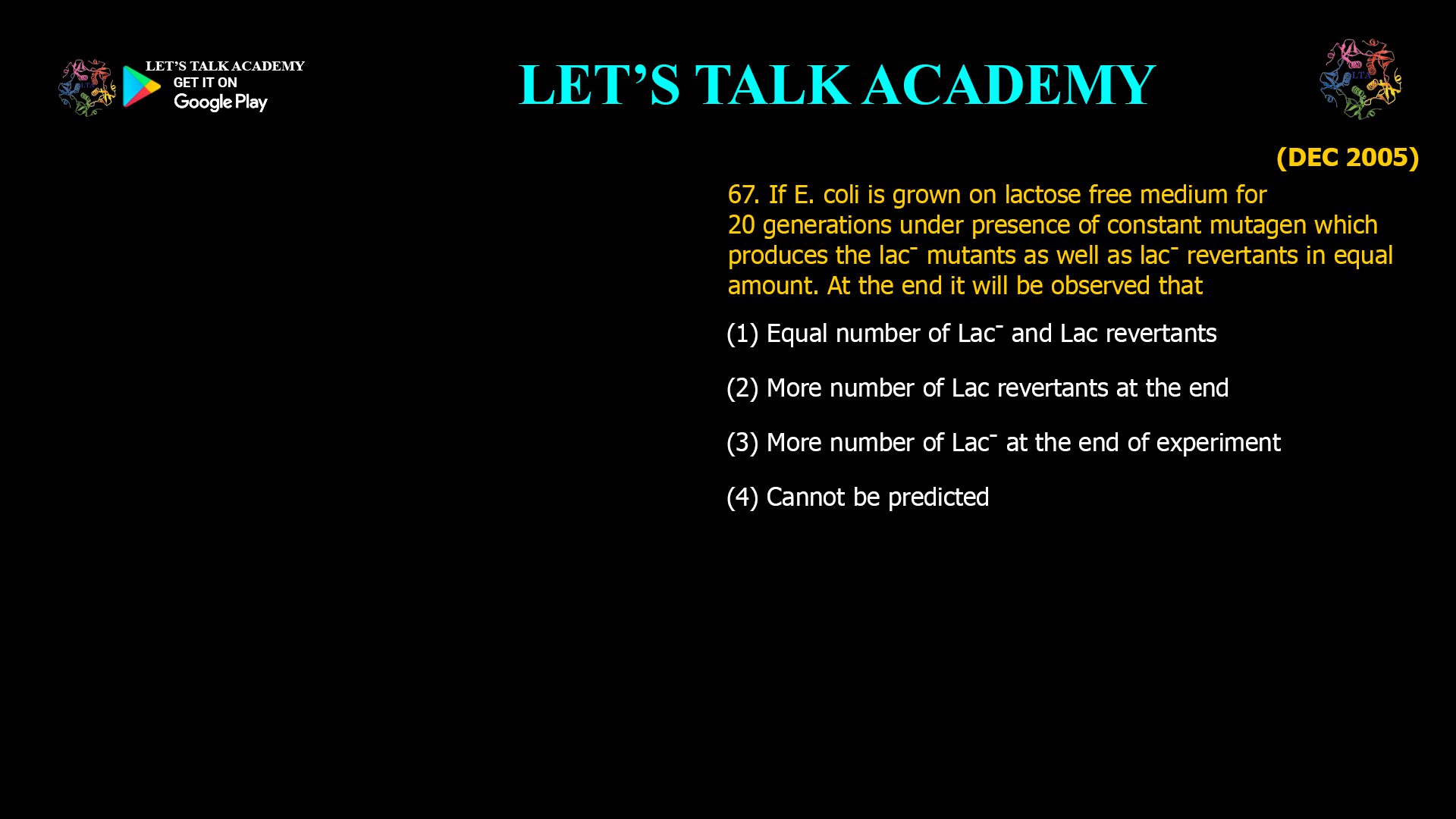- If E. coli is grown on lactose free medium for 20 generations under presence of constant mutagen which produces the lac– mutants as well as lac– revertants in equal amount. At the end it will be observed that
(1) Equal number of Lac– and Lac revertants
(2) More number of Lac revertants at the end
(3) More number of Lac– at the end of experiment
(4) Cannot be predictedExperimental Setup Recap
-
Medium: Lactose-free (no selective advantage for either Lac+ or Lac-)
-
Mutagen: Constant, produces Lac- and Lac revertants at equal rates
-
Duration: 20 generations
Genetic and Environmental Dynamics
Mutation and Reversion Rates
With a mutagen present, both forward mutations (Lac+ to Lac-) and reverse mutations (Lac- to Lac+) occur at the same rate. This means, at the genetic level, there is a continuous and balanced conversion between the two genotypes.
Selection Pressure
Because the medium lacks lactose, there is no selective advantage for either phenotype. Both Lac- and Lac revertants (Lac+) have equal fitness in this environment. There is no environmental pressure favoring one over the other.
Population Genetics Principle
In the absence of selection and with equal forward and reverse mutation rates, the population will reach a mutation-selection equilibrium where the proportion of each genotype is determined by the balance of mutation rates. If mutation rates are equal and there is no selection, the expected outcome is that the two genotypes will be present in equal numbers.
Final Observation
At the end of 20 generations, you will observe an equal number of Lac- mutants and Lac revertants.
This outcome is a direct result of:
-
Equal rates of forward and reverse mutations
-
Absence of selection pressure in a lactose-free environment
-
Sufficient time (20 generations) for the population to reach equilibrium
Table: Summary of Experimental Factors
Factor Condition Effect on Outcome Mutation Rate Equal for Lac- and Lac revertants Balances genotype frequencies Selection Pressure None (lactose-free medium) No fitness difference Generations 20 Sufficient for equilibrium Observed Result — Equal numbers of both Conclusion
The experiment demonstrates a fundamental principle of population genetics: In the absence of selection and with equal mutation rates in both directions, the frequencies of two genotypes will equilibrate. Thus, after 20 generations under constant mutagen exposure and no selection, there will be equal numbers of Lac- mutants and Lac revertants in the E. coli population.
Correct answer: (1) Equal number of Lac- and Lac revertants.
-



